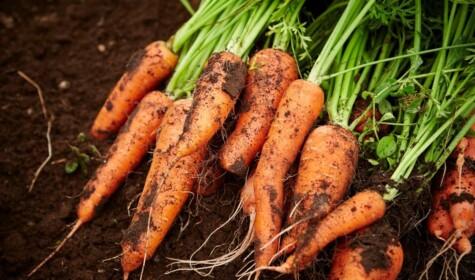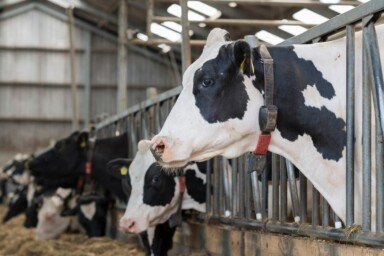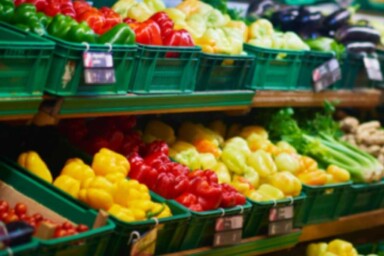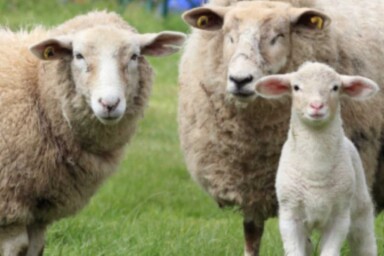With Christmas just around the corner, there’s something on everyone’s mind – Christmas dinner. What will you serve this year? A bird, ham, lamb or nut roast? What accompaniments are you looking forward to? Is it brussels sprouts drowned in pancetta? Chipolatas with duck? Sweet red cabbage? And where will all this come from? Have you thought about that?
For a lot of people, the answer is ‘the supermarket’. This Christmas, in particular, is generating a fair amount of anxiety about where food is coming from and how much it will cost. Inflation is becoming widely apparent with food prices climbing steadily over the last year – your Christmas brussels sprouts are up 11% from last year. Pair this with the concerns around shortages more generally and it’s really quite surprising that mass panic hasn’t broken out – let’s hope Government doesn’t insist that there’s nothing to worry about!!!
But, just like when the pandemic hit, there is a great way round the potential shortages at the supermarket: local food producers. While there is a widespread misconception that anything local is also more expensive, you’d might be surprised about the value that local food delivers.
I’m a local producer – my husband and I run a small-scale organic edible horticulture business. Christmas is big for us – we do a lot of veg. I’m always curious about what our competitors are charging for their veg because we want to make our veg as affordable as we can. So, pretty regularly, I look at how what we produce competes against supermarket veg. I check prices at a couple of different supermarkets: Waitrose on the high end, Sainsbury’s or Tesco in more middle ground. I don’t check Aldi – we can’t compete.
A price comparison of Christmas veg
Recently, I did a price comparison on some of our Christmas veg and it was interesting. Organic parsnips that are actually from the UK (even parsnips which are marked British on the packaging, may come from up to as many as seven other countries, and can be sold as British as long as they are grown here for some of the year) were both more expensive than our parsnips. We sell parsnips at £3.30/kg where organic parsnips at Waitrose and Sainsbury’s are £3.60 and £3.40 respectively. And we were comparable on organic leeks as well, falling between the two supermarkets in price.
But when it comes to conventionally produced veg, it’s a different ball game – local veg producers can’t begin to compete with large-scale vegetable production – and it’s much the same in other areas of small- and medium-scale farming (like meat, eggs and milk).
The economics of local production is based, mainly, on direct marketing – finding those people that want an alternative to the supermarket and through CSAs (a partnership between farmers and consumers in which the responsibilities, risks and rewards of farming are shared), Box Schemes, Farmers’ Markets and local shops and restaurants and building a relationship with them, often over years. Both small- and medium-scale producers are increasingly going local, finding a better profit margin along with loyal customers. It’s starting to have an impact on dairy which has been in desperate trouble for years as the price of milk has fallen, at times, below the cost of production. Where we are, way out in West Wales, there are now three dairies producing beautiful milk through milk vending machines and local delivery. The milk comes in glass bottles which you wash and re-use and the price is very reasonable at £1 a litre. If you never knew that a dairy’s milk has its own distinct taste, now is the time to find out.
Good for the planet
Aside from building a stronger relationship with your farmer and really getting to grips with where your food comes from, there are a host of other benefits that bring value to what you buy locally. Most of the UK’s veg box schemes use organic or agroecological practices, so that means that your food doesn’t come with dangerous pesticides. The heavy use of pesticides in conventional vegetable production is linked to a growing ‘insect apocalypse’ which could quite seriously lead to an inability to grow food, where we ‘offer prayers for the return of weeds and bugs’ in the words of E. O. Wilson.
Soil health is key in organic and agroecological farming and growing and the care that is put into that is again vital for its productivity. Biologically rich soil fosters broad biodiversity, from earthworms on down. Synthetic nitrogen fertiliser which is used in conventional farming is hugely damaging to the environment, in a pervasive way – witness the ever growing ‘dead zone’ in the Gulf of Mexico from fertiliser run-off down the Mississippi River. It also releases nitrous oxide, one of the three most potent greenhouse gases. We can’t afford to continue producing our food this way. The advances of the Green Revolution are waning significantly and with climate change, yields falling around the world.
Good for your family
Finally, the other important thing that local food provides is freshness and flavour, and that’s definitely what you want for Christmas! Food that travels loses nutritional value, so the shorter the journey between harvest and table the better, and the shorter your supply chain the safer your food will be. Best of all, local food economies benefit the wider community – as Sustain has evidenced, for ‘every £10 spent with [a] box scheme results in total spending of £25 in the local area’ with that figure falling to £14 when the £10 is spent in the supermarket.
So, staying close to home with your Christmas dinner delivers a lot more than you might expect: you’re giving back to your local economy and supporting your local community, eating food that is grown without damaging chemicals by farmers and growers committed to sustainable food production because they want better environmental outcomes for a greater greener world. And isn’t that the present that we all want most?






